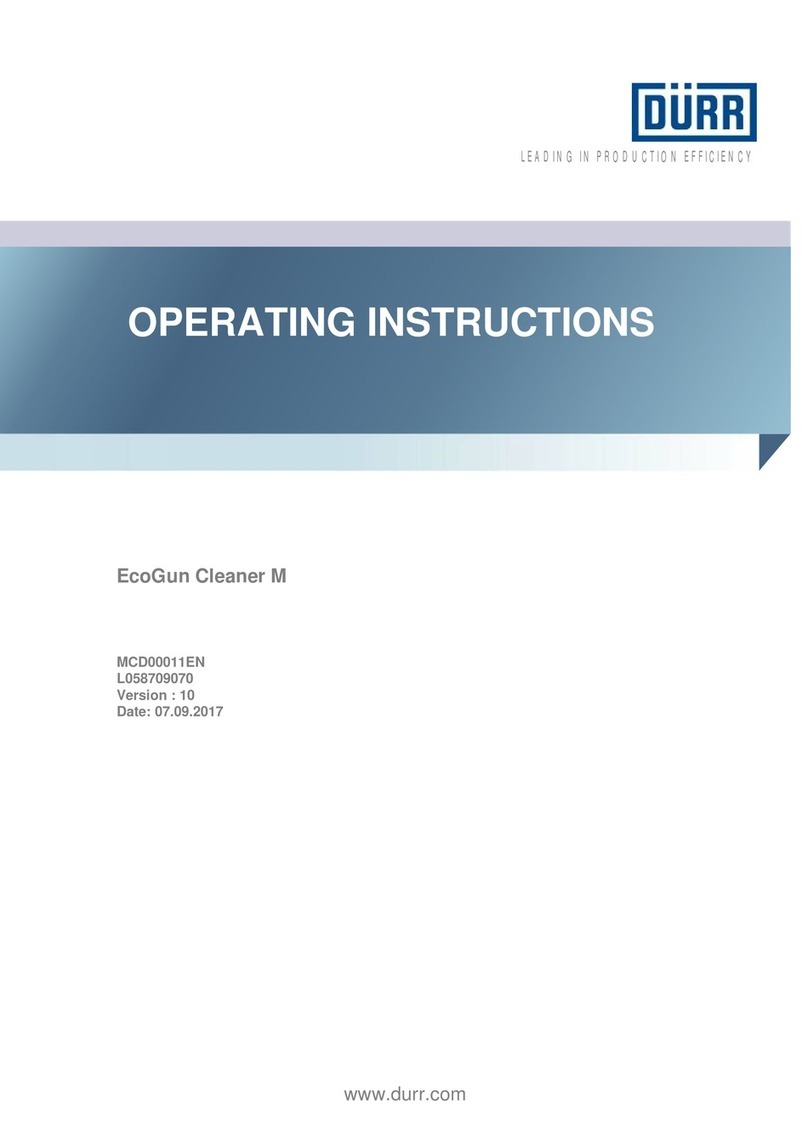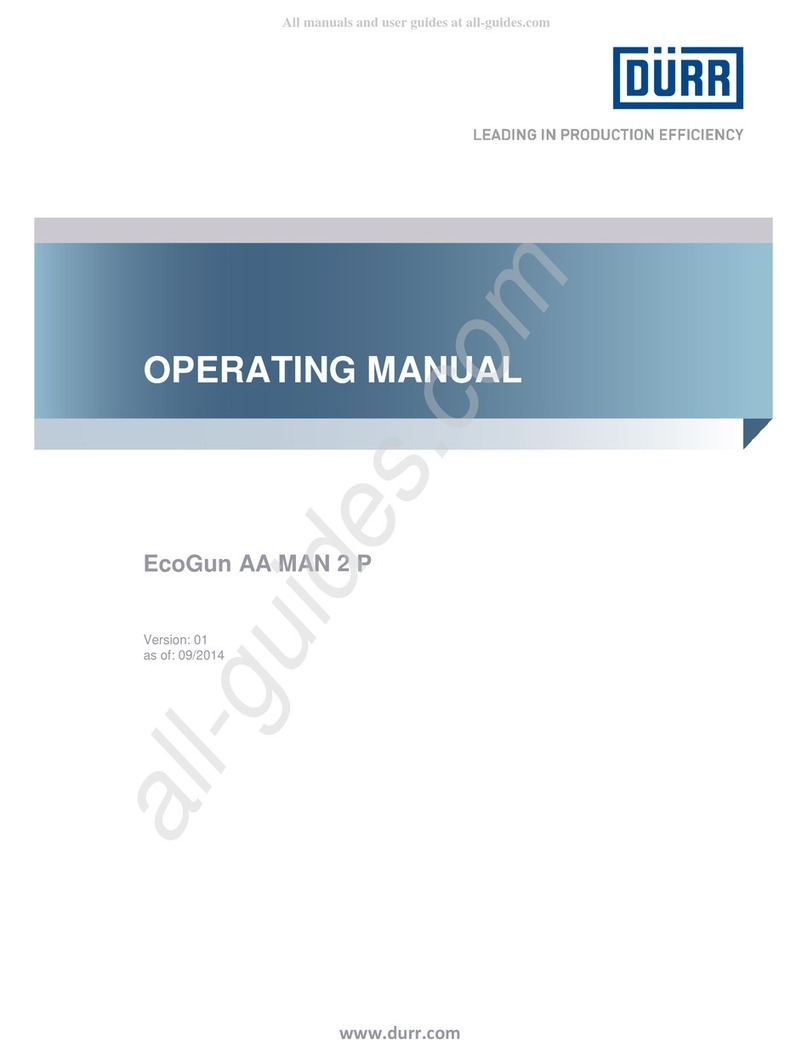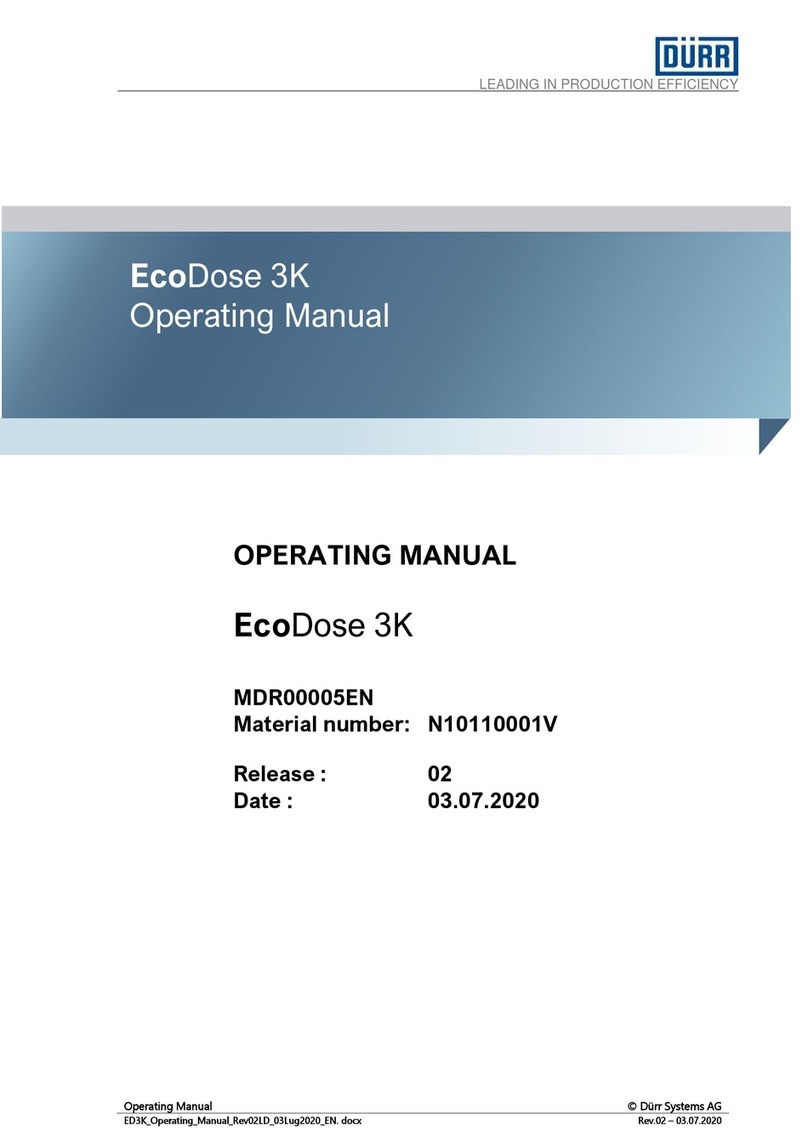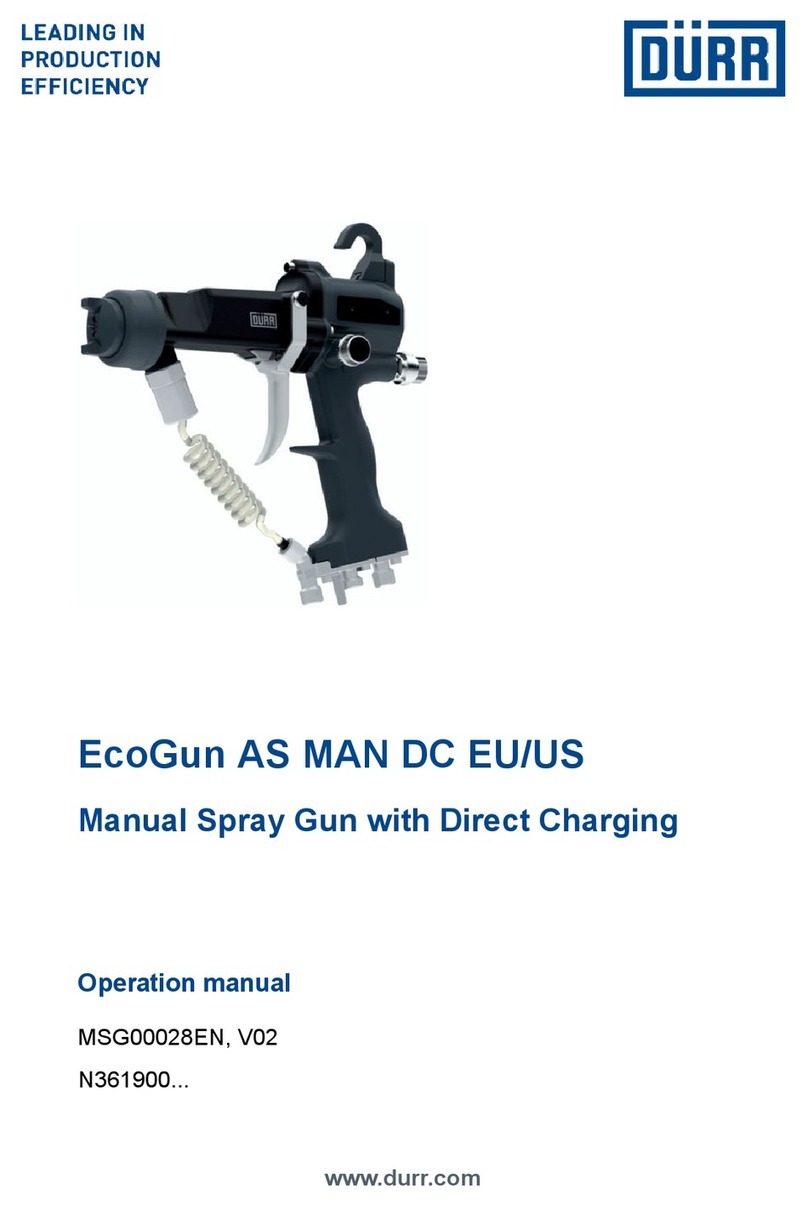
TABLE OF CONTENTS
1 Product overview.......................... 4
1.1 Overview................................ 4
1.2 Short description.................... 4
2 Safety............................................. 4
2.1 Presentation of Notes............ 4
2.2 Intended Use.......................... 5
2.3 Staff qualification.................... 5
2.4 Personal protective equip-
ment....................................... 6
2.5 Residual risks......................... 6
3 Transport, scope of supply and
storage........................................... 7
3.1 Scope of delivery................... 7
3.2 Handling of
packaging material................. 7
3.3 Storage.................................. 7
4 Assembly....................................... 7
4.1 Requirements for the
Installation point..................... 7
4.2 Assembly............................... 8
5 Commissioning............................. 8
6 Operation..................................... 10
6.1 Safety recommendations..... 10
6.2 Checks................................. 10
6.3 Selecting air cap.................. 10
6.4 Changing the air cap............ 11
6.5 Alignment of the air cap....... 12
6.6 Guiding the spray gun.......... 12
6.7 Rinsing................................. 12
6.7.1 Safety recommendations.. 12
6.7.2 General notes................... 12
6.7.3 Rinsing spray gun............. 13
7 Cleaning and maintenance........ 14
7.1 Safety recommendations..... 14
7.2 Cleaning............................... 15
7.3 Maintenance........................ 17
7.3.1 Maintenance schedule...... 17
7.3.2 Lubrication........................ 17
8 Faults........................................... 17
8.1 Safety recommendations .... 17
8.2 Defects table........................ 19
8.3 Troubleshooting................... 21
8.3.1 Replace needle and
nozzle................................ 21
8.3.2 Replacing valve seal......... 23
8.3.3 Replace needle gland....... 25
8.3.4 Set delay time................... 27
9 Disassembly and Disposal........ 28
9.1 Safety recommendations..... 28
9.2 Disassembly......................... 28
9.3 Disposal .............................. 28
10 Technical data............................. 28
10.1 Dimensions and weight...... 28
10.2 Connections....................... 28
10.3 Operating conditions.......... 29
10.4 Emissions........................... 29
10.5 Operating values................ 29
10.6 Type plate.......................... 29
10.7 Materials used.................... 29
10.8 Operating and auxiliary
materials............................ 29
10.9 Material specification......... 29
11 Replacement parts, tools and
accessories................................. 30
11.1 Replacement parts............. 30
11.2 Tools.................................. 38
11.3 Accessories........................ 39
11.4 Order.................................. 40
05/2018 EcoGun 119 - MSG00013EN 3/44













































